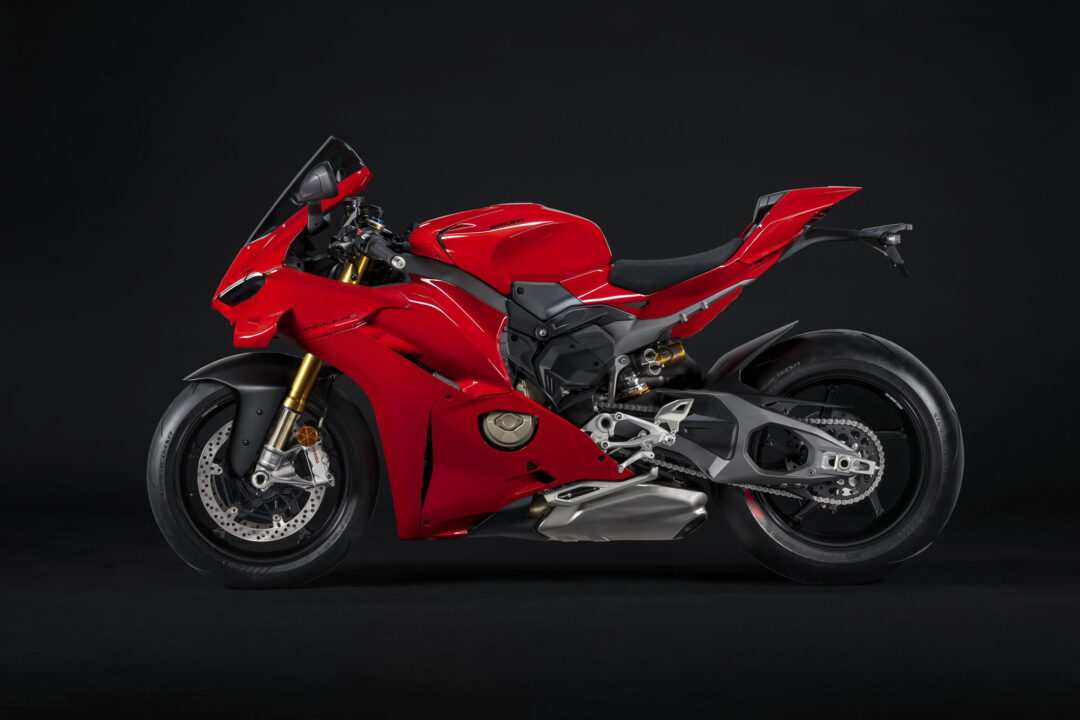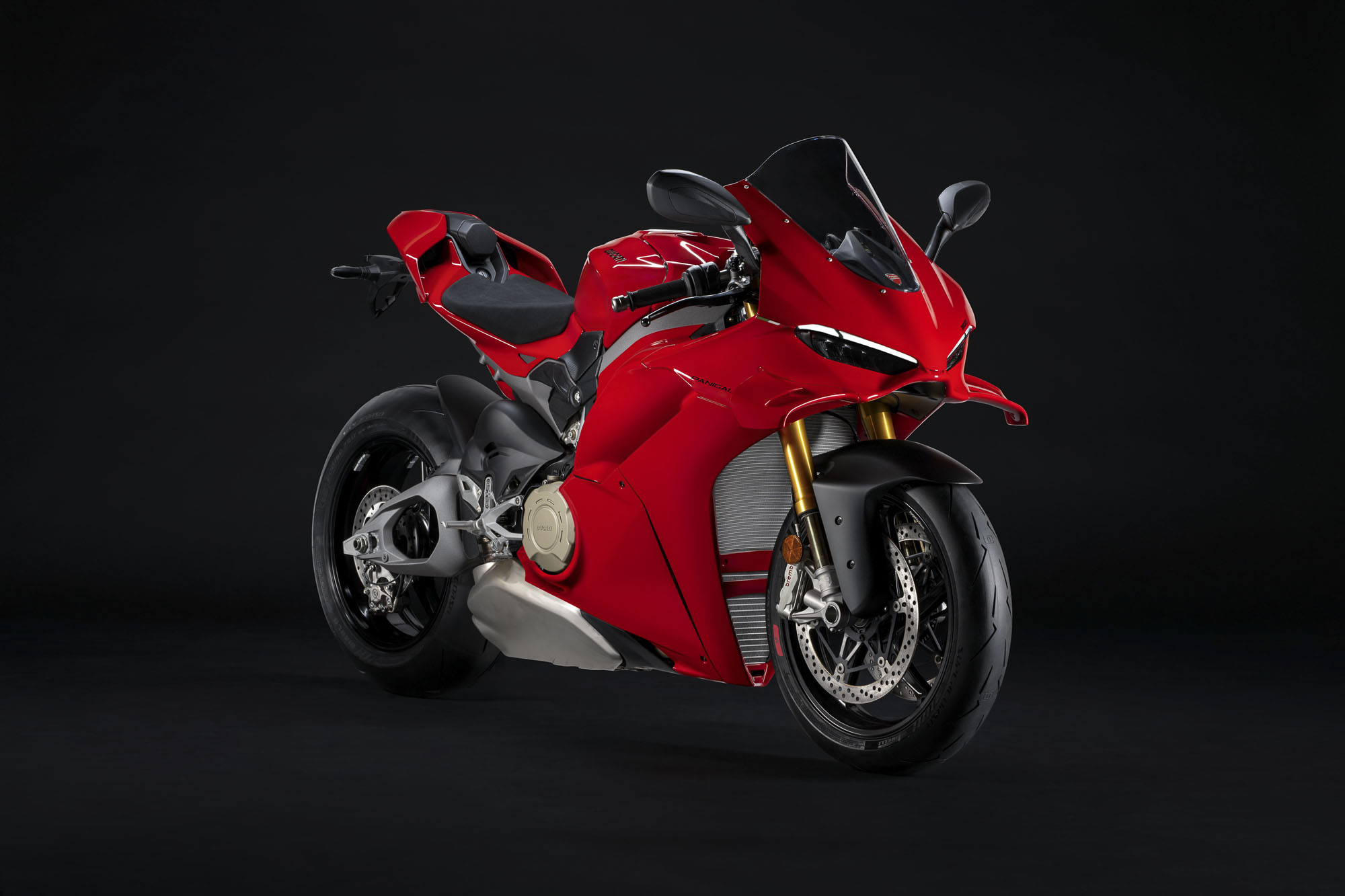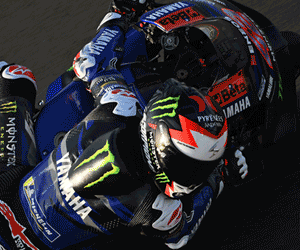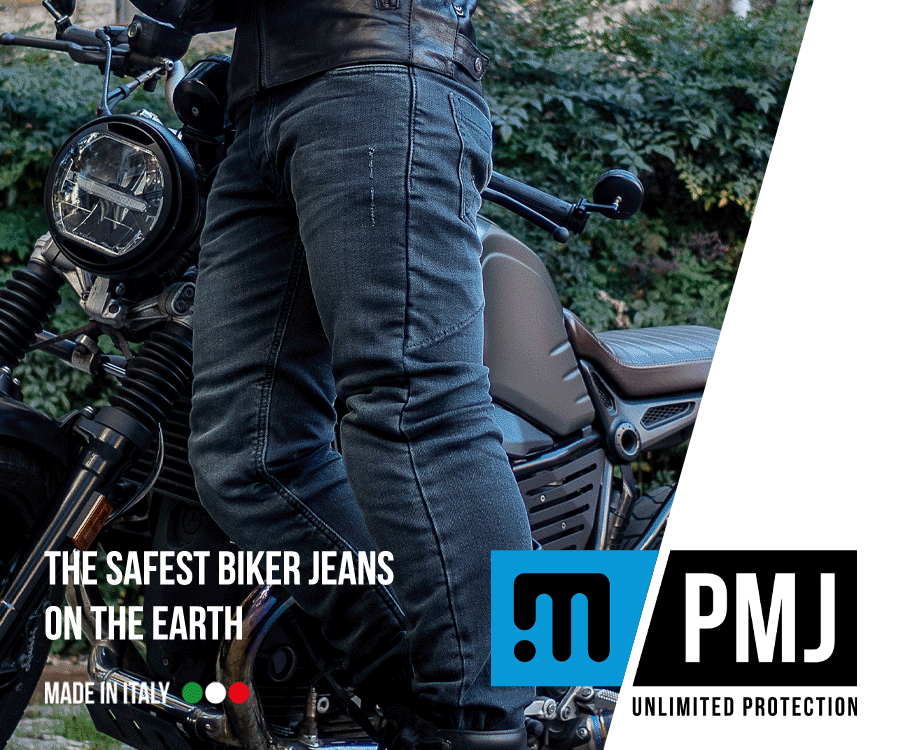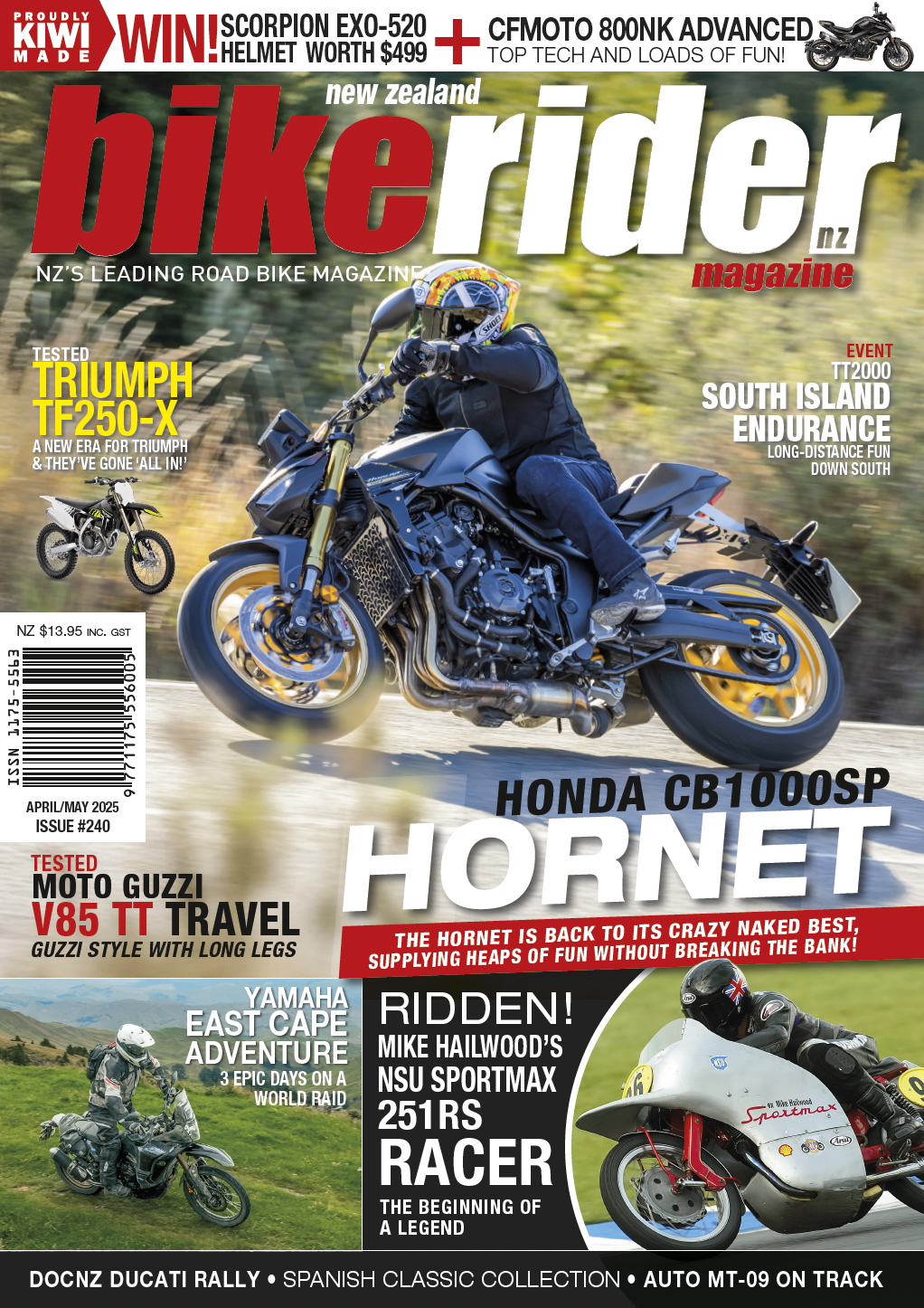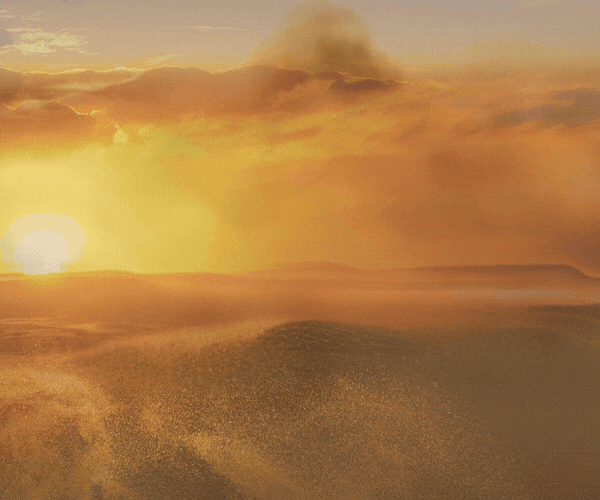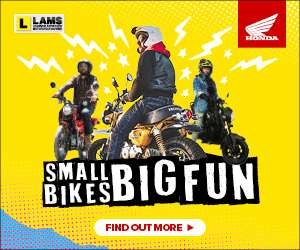With all the attention going on the fact the Panigale has lost its trademark single-sided swingarm, this is still undoubtedly the sharpest, most technologically advanced and sexy version of Ducati’s stonking V4 flagship.
The new Panigale V4 Ducati has been designed to push the limits of road super sports bikes even further and has undergone a complete rethink in terms of design, technical base and ergonomics.
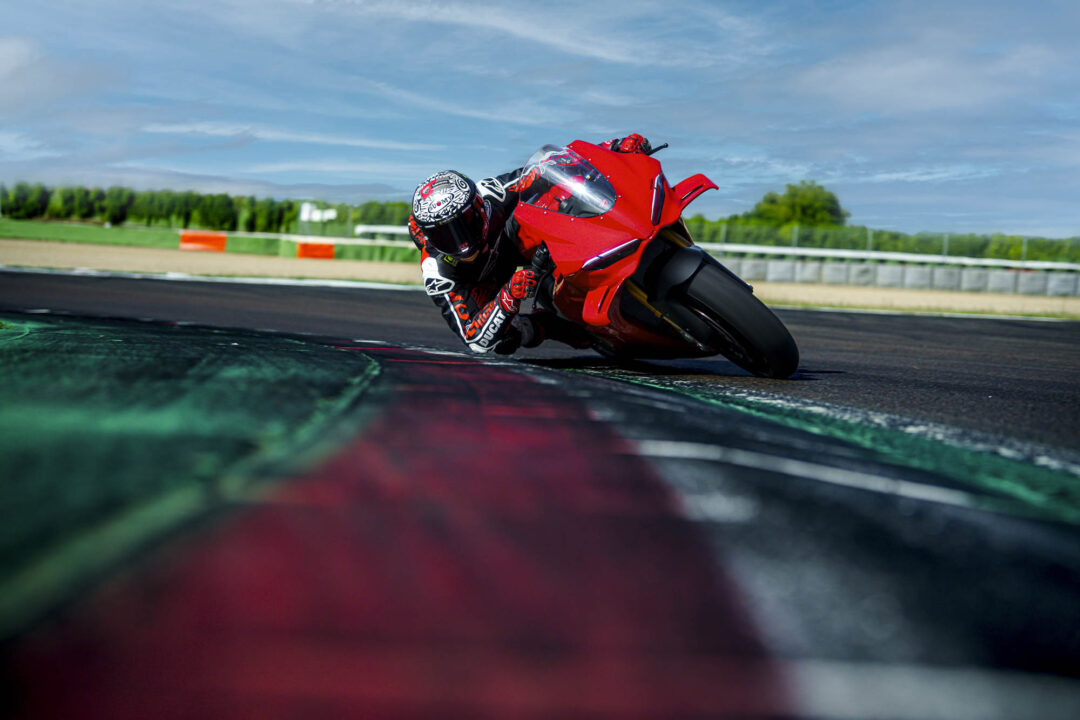
Integrated aerodynamic design
The new fairing reduces aerodynamic resistance by 4% and protects the rider more effectively. The high-efficiency double-profile wings are integrated with the shapes of the front, maintaining the contribution in terms of downforce unchanged compared to the previous model. Moving back the leading edge of the fairing with respect to the front wheel makes the bike nimbler when changing direction at speed, while the improvement in the shape of the mudguard and the conveyor upstream of the radiators increases the effectiveness of the cooling system, particularly the oil cooler.
Reportedly inspired by the legendary Ducati 916, the designers’ objective was to take inspiration from the iconic motorcycle and integrate the ergonomic and aerodynamic solutions of the Desmosedici GP, to still make it work on track. The side view of the new Panigale V4 finds that balance between front and rear typical of the 916, with a more horizontal general layout and more like that of the MotoGP bikes of recent years. The unmistakable line of the 916 was also the inspiration for designing the front light cluster, in which the assertive look is underlined by the double V-shaped DRL typical of Borgo Panigale sports bikes. Finally, the air intake is now single and central, hidden under the fairing, while the tail, wider and longer, increases roominess for the rider.
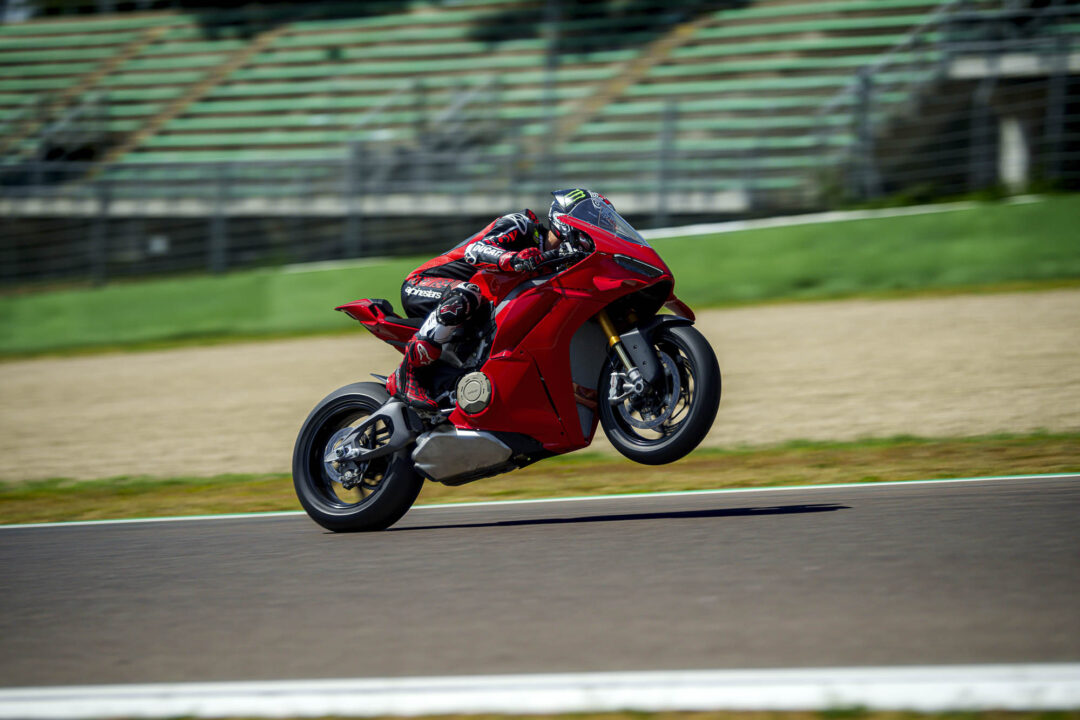
Ergonomics
The riding position has the dual objective of guaranteeing maximum integration of the rider into the aerodynamics while improving control while riding on the track. The seat-tank assembly offers more freedom of longitudinal movement and facilitates positioning in the fairing, also thanks to a deep recess in the upper part which avoids interference with the chin guard of the helmet.
At the same time, the rear area of the tank, combined with the side covers and the shape of the seat, better support the rider during braking, entering and cornering phases without limiting body movements in the other phases. The rider finds it easier to anchor himself with his knees to counteract the deceleration and to lean out of the saddle once the motorbike is cornering, thus reducing strain on the arms and therefore general fatigue. The footrests have been moved 10 mm inwards compared to the current Panigale V4, increasing ground clearance and, by allowing the rider to have his feet and legs positioned more internally, improving aerodynamic penetration.
Racing-derived engine
The Desmosedici Stradale of the new Panigale V4 has had the distribution diagram revised, with cams with a different profile and a higher lift value. The alternator and oil pump are the same as the ones mounted on the Panigale V4 R, while the gearbox drum is the one used on the Superleggera V4. The variable length intake horns have a greater excursion, with a value of 25 mm in the short configuration (-10 mm) and 80 in the long one (+5 mm). And while the motor is Euro5+ homologated it still delivers 216 hp at 13,500rpm and a maximum torque of 12.3 Kgm at 11,250 rpm**. And you can get more once you’ve added the Ducati Performance racing exhaust by Akrapovič, giving a max output of 228hp.
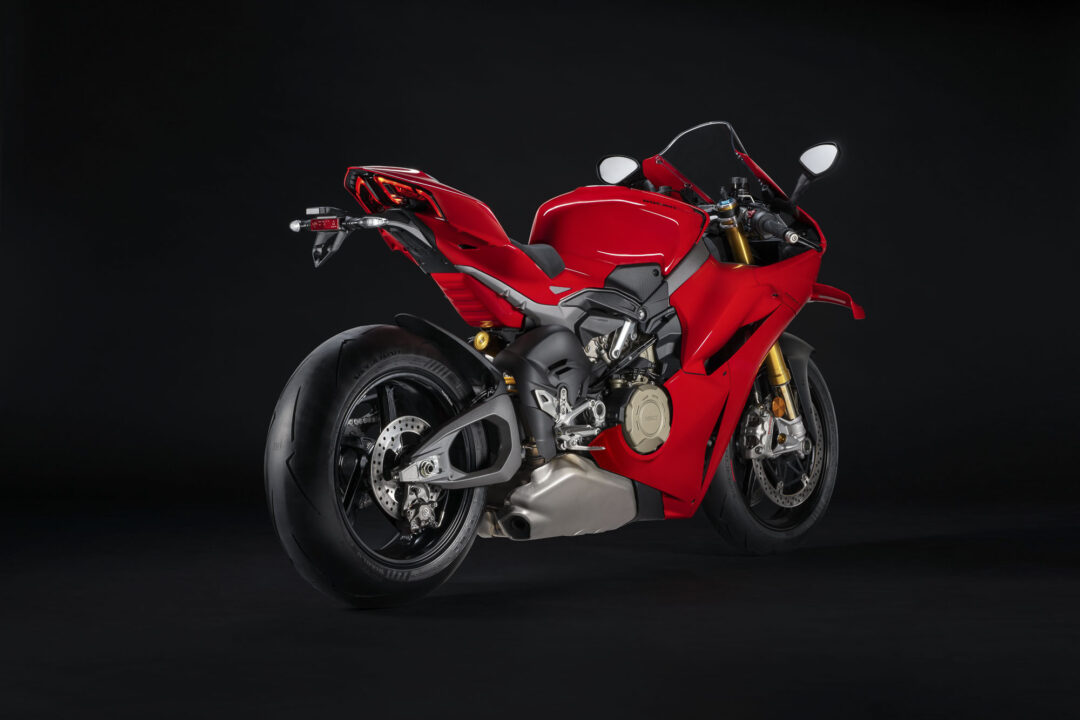
Chassis derived from MotoGP
The Panigale V4 has always been the road supersport bike closest to a MotoGP, shown when in 2022, Francesco Bagnaia recorded a best time of 1m35.8s during the Lenovo Race of Champions, at Misano. That time was less than 4 seconds away from the outright MotoGP race record: 1m31.8s, set by Francesco Bagnaia himself on his Ducati Desmosedici GP.
To make the Panigale V4 even more competitive, Ducati Corse requested new stiffness targets for the frame and swingarm to be able to exploit the full potential of the new slick tyres used in Superbike and to maintain grip at lean angles now over 60°. For this purpose, the Front Frame was modified and a new double-sided swingarm – Ducati Hollow Symmetrical Swingarm – was developed; lightweight and with an innovative design, thanks to a specific geometry, this allowed the position of the silencer under the engine to be maintained, a unique solution in the global panorama of road super sports bikes.
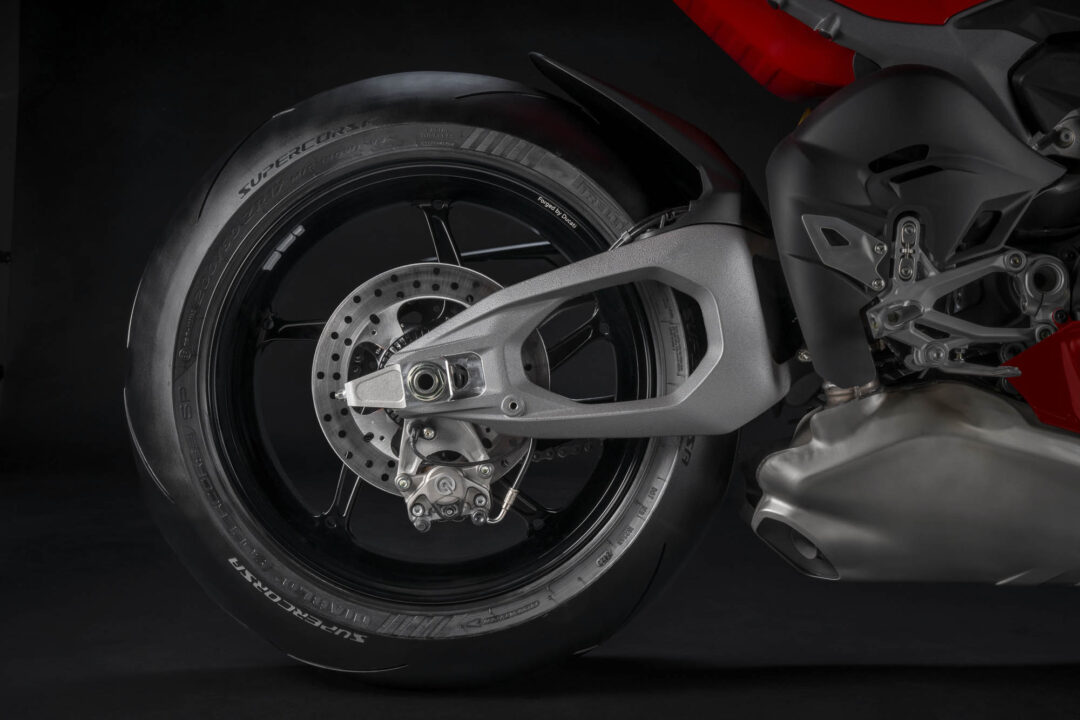
The new swingarm reduces lateral stiffness (-37% compared to the previous single-sided swingarm) and weight thanks to the two large lightening slots, improving traction when exiting corners and the rider’s feeling during acceleration. The swingarm-forged rear rim assembly weighs 2.7 kg less than the previous one and is more effective in putting power to the ground. On the Panigale V4 S, the forged aluminium alloy wheels with five tangential spokes, inspired by those of the Desmosedici GP, weigh only 2.95 and 4.15 kg for the front and rear respectively.
The Front Frame is lighter (3.47 kg compared to the previous 4.2) and has been remodulated in terms of stiffness compared to the previous model (-40% laterally). As a result, it offers even more confidence when leaning and is more effective when it comes to taking the apex and closing the turn. The third generation electronically controlled Öhlins NPX/TTX suspensions of the Panigale V4 S broaden their range of adjustments, offering more comfortable settings for road use and are more effective when riding between the curbs of a circuit. At the same time, the greater speed of the hydraulic valves offers a more precise and accurate response in every riding situation.
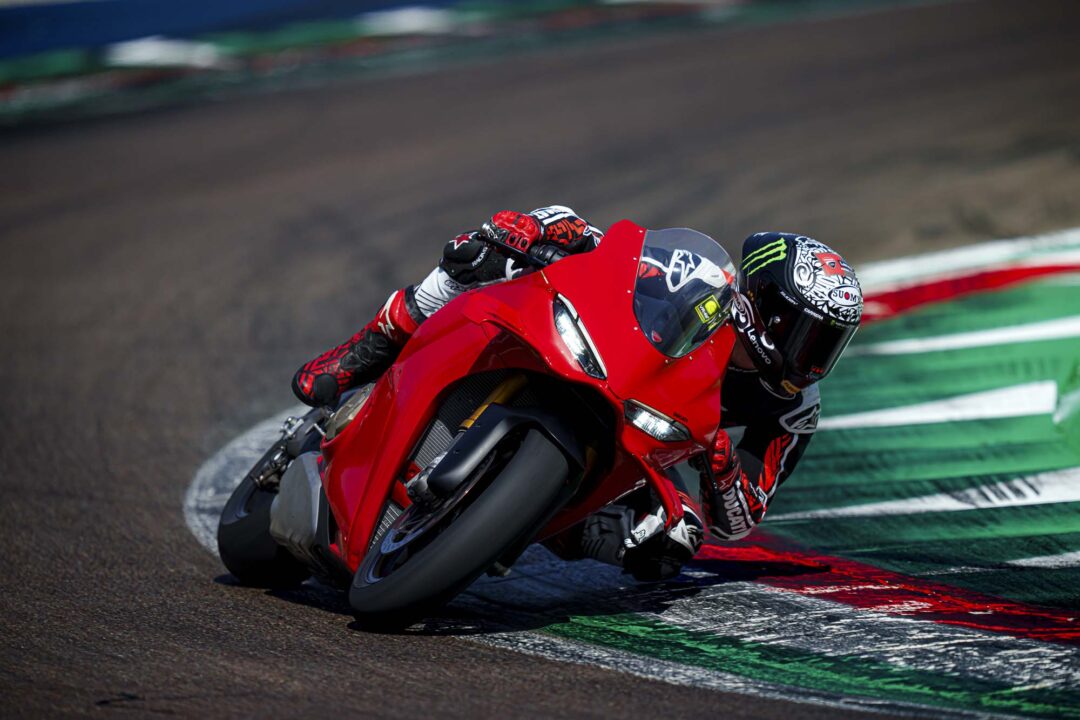
Brakes
The new Ducati Panigale V4 is the first motorcycle in the world equipped with Brembo HypureTM front brake calipers. Lighter (-60 grams per pair) and more high performing, the Brembo HypureTM calipers disperse the heat generated by braking more effectively, offering more consistent performance, and therefore greater effectiveness. Another important world premiere is the Race eCBS system, developed by Bosch in collaboration with Ducati. In the levels dedicated to circuit use, the latter can activate the rear brake according to strategies that reproduce the techniques of professional riders and therefore experiment with the possibility of delaying the braking point on the track compared to the absence of the system. In particular, the system continues to activate the rear brake even after releasing the front brake when entering and cornering, as professionals manage to do using the handlebar control.
Ducati Vehicle Observer
The Ducati Vehicle Observer simulates the input of over 70 sensors and estimates the ground forces acting on the motorcycle and the loads that it can bear in various riding conditions, integrating the information from the IMU inertial platform in an even more accurate manner. In addition, there’s also Ducati Traction Control DVO, Ducati Slide Control, Ducati Wheelie Control DVO, Ducati Power Launch DVO, Engine Brake Control and Ducati Quick Shift 2.0. The DQS 2.0 system uses a strategy based solely on the angular position sensor of the gear drum, thus being able to use a gear shift rod without microswitches and therefore offering the rider a more direct feeling with reduced travel.
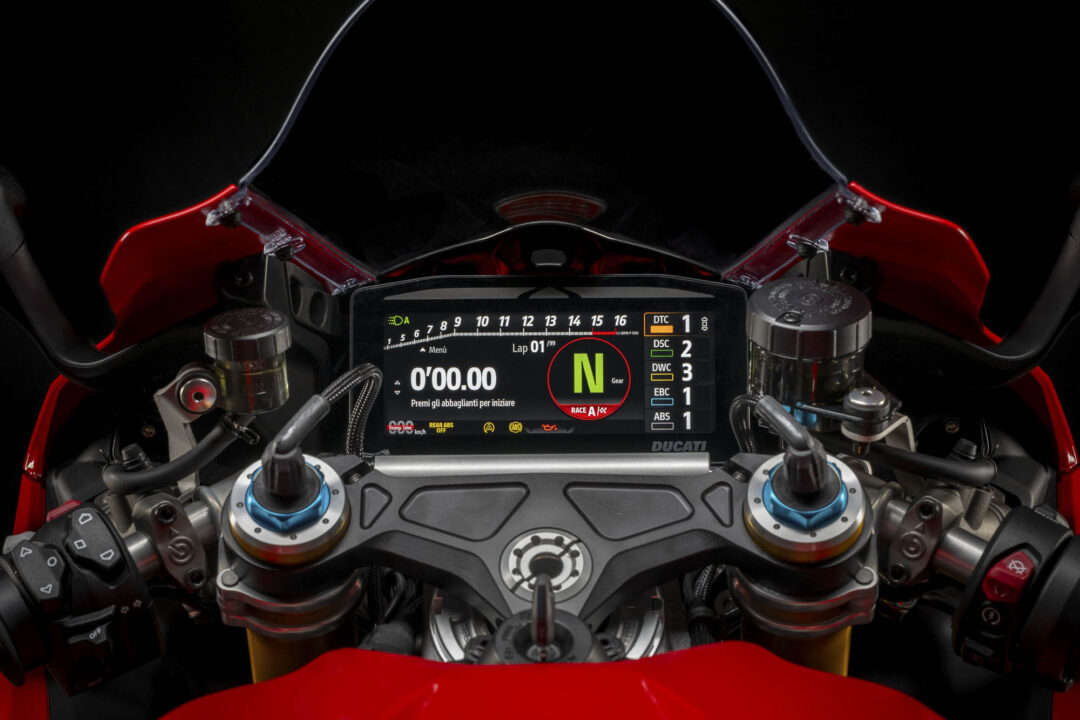
MotoGP dashboard
The dashboard. The 6.9″ dashboard is completely new and with an 8:3 aspect ratio offers maximum readability without interfering with vision through the windshield in the fairing position. The protective glass uses Optical Bonding technology to ensure optimal readability on a black background even during the day. There is a new Track display on the dashboard and a series of new parameters can be displayed on one side of the screen:
“g-Meter”, which indicates in real time the value of lateral acceleration when leaning, and longitudinally during acceleration and braking.
“Power&Torque”, which displays the percentage of power and torque delivered at that moment compared to the maximum values available given the gear engaged.
“Lean angle”, which shows the instantaneous lean angles accompanied by the level of throttle opening and the pressure exerted on the brake.
The Info Mode Track can display chronological performance in real time. Taking advantage of the GPS system, the dashboard displays lap times, and is capable of handling three splits, which can be set by the rider using the flash button during the first session. The dashboard displays the split times table, with T1, T2, or T3 icons indicating the performance obtained in that sector of the track using the same colour codes – white, grey, orange, red – used in MotoGP.
The Road info mode is very clean, with great prominence given to the circular tachometer, placed in the centre and with the gear indicator inside. The left side of the screen is reserved for settings, the navigator (if installed), the music player, smartphone management and accessory heated grips, and the different functions available for each of these. On the right-hand side are the indications for speed, time, water temperature and cruise control, if enabled. The dashboard dynamically changes the distribution of space, moving the columns and redistributing the areas, to offer maximum visibility to the functions you are currently using, such as the navigator.
Upon returning to the pits, the new DDL data acquisition completes the official rider experience. The system, developed by 2D in collaboration with Ducati, records all the parameters relevant for riding from the Panigale’s CAN bus line, cross-referencing them with a state-of-the-art GPS system capable of drawing the trajectories travelled with great precision. The data can then be analysed using external software with templates and reports created by Ducati Corse, to perfect your performance on the track.
The new Panigale V4, offered in single-seater configuration with a passenger kit available as an accessory*, will arrive in dealerships in September 2024.
